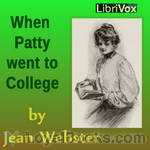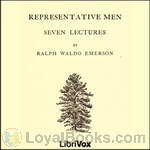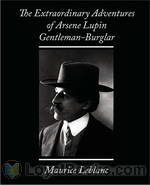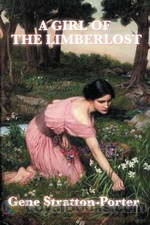|
Books Should Be Free Loyal Books Free Public Domain Audiobooks & eBook Downloads |
|
|
Books Should Be Free Loyal Books Free Public Domain Audiobooks & eBook Downloads |
|
Literature |
|---|
|
Book type:
Sort by:
View by:
|
By: Rafael Sabatini (1875-1950) | |
|---|---|
 The Trampling of the Lilies
The Trampling of the Lilies
| |
 Bardelys the Magnificent
Bardelys the Magnificent
| |
 Saint Martin's Summer
Saint Martin's Summer
| |
 The Shame of Motley
The Shame of Motley
| |
 The Strolling Saint
The Strolling Saint
| |
 The Suitors of Yvonne
The Suitors of Yvonne
| |
By: John Milton (1608-1674) | |
|---|---|
 Paradise Lost
Paradise Lost
Magnificent in its scale and scope, this monumental poem by the blind poet John Milton was the first epic conceived in the English language. It describes an omniscient, all powerful God, the Fall of Man, the Temptation in the Garden of Eden, the disgraced angel who later becomes known as Satan, the Angelic Wars fought by Archangels Michael and Raphael and the Son of God who is the real hero of this saga. The poet John Milton was more than sixty years old when he embarked on this immense work of literary creation... | |
 Paradise Regained
Paradise Regained
Paradise Regained is a poem by the 17th century English poet John Milton, published in 1671. It is connected by name to his earlier and more famous epic poem Paradise Lost, with which it shares similar theological themes. Based on the Gospel of Luke’s version of the Temptation of Christ, Paradise Regained is more thoughtful in writing style, and thrives upon the imagery of Jesus’ perfection in contrast to the shame of Satan. | |
 Areopagitica
Areopagitica
A prose tract or polemic by John Milton, published November 23, 1644, at the height of the English Civil War… Milton, though a supporter of the Parliament, argued forcefully against the Licensing Order of 1643, noting that such censorship had never been a part of classical Greek and Roman society. The tract is full of biblical and classical references which Milton uses to strengthen his argument. The issue was personal for Milton as he had suffered censorship himself in his efforts to publish... | |
 Samson Agonistes
Samson Agonistes
“The Sun to me is darkAnd silent as the Moon,When she deserts the nightHid in her vacant interlunar cave.”Milton composes his last extended work as a tragedy according to the classical Unities of Time, Place and Action. Nevertheless it “never was intended for the stage” and is here declaimed by a single reader.Samson the blinded captive, in company with the Chorus of friends and countrymen, receives his visitors on their varying missions and through them his violent story is vividly recalled... | |
 Milton's Comus
Milton's Comus
| |
 L'Allegro, Il Penseroso, Comus, and Lycidas
L'Allegro, Il Penseroso, Comus, and Lycidas
| |
 Poemata : Latin, Greek and Italian Poems by John Milton
Poemata : Latin, Greek and Italian Poems by John Milton
| |
By: J. M. Barrie (1860-1937) | |
|---|---|
 Peter Pan
Peter Pan
His name has become a metaphor for one who will never grow old. Peter Pan by JM Barrie is the story of a boy who remains a boy while the world around him changes. Sir James Mathew Barrie was a Scottish playwright and novelist whose works were received with great critical and commercial success in the late nineteenth and early twentieth century. He discovered the main inspiration for his creative genius in his friendship (and later guardianship) with the children of Arthur and Sylvia Llewellyn-Davies... | |
 The Admirable Crichton
The Admirable Crichton
From the author of Peter Pan:Lord Loam, a British peer, considers class divisions to be artificial. He promotes his views during tea-parties where servants mingle with his aristocratic guests, to the embarrassment of all. Crichton, his butler, particularly disapproves of this.Loam, his family, a maid, and Crichton are shipwrecked on a deserted tropical island. The resourceful Crichton is the only one of the party with any practical knowledge. Eventually, social roles are reversed, and Crichton becomes the governor. | |
By: Charles Lamb (1775-1834) | |
|---|---|
 Tales from Shakespeare
Tales from Shakespeare
This little gem of a book was probably the first introduction to Shakespeare that most readers have had as children. Tales from Shakespeare was written in 1807 by a young clerk called Charles Lamb in the offices of the East India Company. Lamb co-authored them with his beloved sister Mary. The pair lived together for life, having gone through immense trauma caused by mental illness and tragedy. However, far from being a melancholy duo, they led an active and ample social life in the company of some of the literary greats of the Romantic movement of the 19th century... | |
By: Helen Keller (1888-1968) | |
|---|---|
 The Story of My Life
The Story of My Life
An autobiography of Helen Keller published when the author was still in her early 20's. The narrative reveals how her mind developed and matured until she began her studies at Radcliffe College | |
By: Johann Wolfgang von Goethe (1749-1832) | |
|---|---|
 The Sorrows of Young Werther
The Sorrows of Young Werther
The Sorrows of Young Werther (German, Die Leiden des jungen Werther, originally published as Die Leiden des jungen Werthers) is an epistolary and loosely autobiographical novel by Johann Wolfgang von Goethe, first published in 1774. The story follows the life and sorrows of Werther after he falls desperately in love with a young woman who is married to another. A climactic scene prominently features Goethe's own German translation of a portion of James Macpherson's Ossian cycle of poems, which had originally been presented as translations of ancient works, and was later found to have been written by Macpherson. (Introduction by Wikipedia and Barry Eads) | |
 Faust, Part 1
Faust, Part 1
Faust is the protagonist of a classic German legend; a highly successful scholar, but also dissatisfied with his life, and so makes a deal with the devil, exchanging his soul for unlimited knowledge and worldly pleasures.Johann Wolfgang von Goethe's Faust is a tragic play in two parts. It is Goethe's most famous work and considered by many to be one of the greatest works of German literature.This first part of Faust is not divided into acts, but is structured as a sequence of scenes in a variety of settings. After a dedicatory poem and a prelude in the theatre, the actual plot begins with a prologue in Heaven and Scene 1 in Faust's study. | |
 Erotica Romana
Erotica Romana
Also known as the "Roman Elegies," Erotica Romana is von Goethe's literary tribute to human sexuality and eroticism. Written in 24 elegies to emulate classical Roman elegy writers such as Tibullus, Propertius, and Catullus, von Goethe creates a lyrical work of art that has often been subject to censorship. | |
 Faust — Part 1
Faust — Part 1
| |
 May Song
May Song
Johann Wolfgang von Goethe was a German writer and statesman. His body of work includes epic and lyric poetry written in a variety of metres and styles; prose and verse dramas; memoirs; an autobiography; literary and aesthetic criticism; treatises on botany, anatomy, and colour; and four novels. In addition, numerous literary and scientific fragments, more than 10,000 letters, and nearly 3,000 drawings by him are extant. | |
 Faust; a Tragedy, Translated from the German of Goethe
Faust; a Tragedy, Translated from the German of Goethe
| |
 Iphigenia in Tauris
Iphigenia in Tauris
| |
 Egmont
Egmont
| |
By: D. H. Lawrence (1885-1930) | |
|---|---|
 The Rainbow
The Rainbow
Set against the backdrop of a rapidly industrializing England, the bewildering shift in social structure, the fading away of traditions and the advent of new ways of life, The Rainbow by DH Lawrence depicts how one family's story becomes the story of a society. Originally planned as a novel titled The Sisters, Lawrence finally split the theme into two separate novels after many revisions and rewrites. The Rainbow is the first novel in the Brangwen family saga. Tom Brangwen is a small time farmer in rural Nottinghamshire... | |
 Women in Love
Women in Love
If you have read DH Lawrence's The Rainbow, you'd certainly want to read the sequel, Women in Love. Published in 1920, the two books were originally meant to be a single work, spanning several generations of the Brangwen family, especially the women. However, a complicated publishing history, delays and editorial revisions, followed by the hostile reception and controversies that faced The Rainbow led to a gap of five years between the two books. Yet, by 21st century standards, Women in Love seems almost tame, and modern-day readers may well be bewildered by the amount of criticism it generated among the custodians of morals in an earlier age... | |
 Sons and Lovers
Sons and Lovers
This intimate portrait of a coal-miner’s family fastens on each member in turn: Walter Morel, the collier; Gertrude, his wife; and the children: William, Annie, Arthur, and Paul. When Mrs. Morel begins to be estranged from her husband because of his poor financial sense and his drinking habits, she comes to inhabit the lives of her children – most particularly, her sons. She is determined that they will grow to be something more than men that come home blackened with coal dust every day and roaring with drink every night... | |
By: Emily Dickinson | |
|---|---|
 Poems: Series One
Poems: Series One
Renowned poet Emily Dickinson (1830 – 1886) wrote many many poems. This collection, “Poems: Series One”, presents the first installment of the complete poetic works of Miss Emily Dickinson. It is broken into four parts: Life, Love, Nature, and Time and Eternity. The verses of Emily Dickinson belong emphatically to what Emerson long since called “the Poetry of the Portfolio,”–something produced absolutely without the thought of publication, and solely by way of expression of the writer’s own mind. The poetry found here is then entirely honest, and indicative of the authors true feelings. | |
 Poems: Series Two
Poems: Series Two
"The eagerness with which the first volume of Emily Dickinson's poems has been read shows very clearly that all our alleged modern artificiality does not prevent a prompt appreciation of the qualities of directness and simplicity in approaching the greatest themes,—life and love and death. That "irresistible needle-touch," as one of her best critics has called it, piercing at once the very core of a thought, has found a response as wide and sympathetic as it has been unexpected even to those who knew best her compelling power. This second volume, while open to the same criticism as to form with its predecessor, shows also the same shining beauties." | |
 Poems by Emily Dickinson, Third Series
Poems by Emily Dickinson, Third Series
| |
By: Zane Grey (1872-1939) | |
|---|---|
 Riders of the Purple Sage
Riders of the Purple Sage
Dubbed the “most popular Western of all times” Zane Grey's Riders of the Purple Sage was the benchmark by which every other novel in the “Western” genre came to be judged. It portrays the archetypal lone gun slinger, out to wreak revenge for past wrongs who falls foul of the rich and powerful and finally rides away into the sunset, having rid the town of poisonous villains! Riders of the Purple Sage is set in 1871, in a remote part of Utah. It opens with the young and lovely Jane Withersteen being victimized and harassed by her Mormon Church elders for associating with Gentiles or Non-Mormons... | |
 The Lone Star Ranger
The Lone Star Ranger
Post-Civil War Texas, the Lone Star state. Buck Duane is a man who was almost born holding a gun in his hand. His father was an infamous outlaw and the young child grew up witnessing scenes of violence and betrayal. When he himself inadvertently kills a man, he is forced to go into hiding and must live with the very men he despises. However, the love of a beautiful young woman is his redemption. He joins the Texas Rangers and helps to rid the state of notorious criminals, hoping to exchange this for his good name and freedom... | |
 The Last of the Plainsmen
The Last of the Plainsmen
Travel along as Mike Vendetti aka miketheauctioneer narrates an outstanding true account of a trip made in 1909 by Zane Grey and a plainsman, Buffalo Jones, through the Grand Canyon to lasso a cougar. That’s right lasso. Throw a rope around. That’s equivalent to catching one by the tail. As I narrated this book, I found fact to be as exciting as fiction. This part of the west was relatively wild and untamed at this time. Wolves, wild horses, buffalo and other wildlife were quite prevalent, and the Indians were not that friendly... | |
 The Spirit of the Border
The Spirit of the Border
This is an early novel by the phenomenally successful author of frontier, western and sports stories. It deals with historical characters and incidents in the Ohio Valley in the late 18th century, especially with the foundation of Gnaddenhutten, a missionary village intended to bring Christianity to the Indians of Ohio, despite the violent opposition of both Indians and white renegades. This turbulent adventure romance features the heroics of a semi-legendary frontiersman, Lewis Wetzel, who attempts to protect the settlers from hostile Native Americans and the vicious white outlaws the Girty brothers. (Introduction by Leonard Wilson) | |
 Call Of The Canyon
Call Of The Canyon
Glenn Kilbourne returns from the war and travels to Arizona to regain his health. There he is nursed back to health by an Arizona girl, Flo Hutter Kilbourne's fiancée, Carley Burch arrives in Arizona but soon becomes disillusioned with life in the West and returns to New York. Carley soon learns that life in the Big City is not what she really wants. Should she return to Arizaona? Will Glen still love Her? Not only a great love story, Grey, as usual, describes the environment in all its glory. | |
 The Man of the Forest
The Man of the Forest
| |
 Light of the Western Stars
Light of the Western Stars
| |
 Desert Gold
Desert Gold
| |
 Valley of Wild Horses
Valley of Wild Horses
| |
 Rainbow Trail
Rainbow Trail
The Rainbow Trail is a sequel to The Riders of the Purple Sage. Both novels are notable for their protagonists' mild opposition to Mormon polygamy, but in The Rainbow Trail this theme is treated more explicitly. The plots of both books revolve around the victimization of women in the Mormon culture: events in Riders of the Purple Sage are centered on the struggle of a Mormon woman who sacrifices her wealth and social status to avoid becoming a junior wife of the head of a local church, while The Rainbow Trail contrasts the older Mormons with the rising generation of Mormon women who will not tolerate polygamy and Mormon men who do not seek it. | |
 Betty Zane
Betty Zane
| |
 The U. P. Trail
The U. P. Trail
| |
 The Redheaded Outfield
The Redheaded Outfield
| |
 The Young Forester
The Young Forester
| |
 The Young Pitcher
The Young Pitcher
| |
By: Howard Pyle (1853-1911) | |
|---|---|
 The Merry Adventures of Robin Hood
The Merry Adventures of Robin Hood
A modern day legend, Robin Hood is an archetypal hero of the common people who goes to great lengths to famously take from the rich and give to the poor. Luckily he is not alone in his mission, as his righteous views are shared by his band of Merry Men, a group of yeomen, and together they pursue an end to injustice and oppression. Set in medieval England, the tale begins with the introduction of a young archer, who is provoked into conflict and committing a crime against the formidable Sherriff of Nottingham and is immediately dubbed an outlaw... | |
 Howard Pyle's Book of Pirates
Howard Pyle's Book of Pirates
Swashbuckling tales of legendary pirates, buccaneers, and marooners, terrors of the Spanish Main. | |
 Howard Pyle's Book of Pirates
Howard Pyle's Book of Pirates
| |
 The Ruby of Kishmoor
The Ruby of Kishmoor
| |
By: Andrew Lang (1844-1912) | |
|---|---|
 HE
HE
This book is a parody of the famous swashbuckling novel, She, by H. Rider Haggard. Her beauties are beyond the reach of danger from Burlesque, nor does her form flit across our humble pages.” (taken from the Dedication) | |
 Ban and Arriere Ban
Ban and Arriere Ban
| |
 Shakespeare, Bacon, and the Great Unknown
Shakespeare, Bacon, and the Great Unknown
| |
 Helen of Troy
Helen of Troy
| |
 Essays in Little
Essays in Little
| |
 Books and Bookmen
Books and Bookmen
| |
 Letters on Literature
Letters on Literature
| |
 Lost Leaders
Lost Leaders
| |
 The Library
The Library
| |
 The Disentanglers
The Disentanglers
| |
 A Monk of Fife
A Monk of Fife
| |
 New Collected Rhymes
New Collected Rhymes
| |
 Alfred Tennyson
Alfred Tennyson
| |
 The Mark Of Cain
The Mark Of Cain
| |
 How to Fail in Literature; a lecture
How to Fail in Literature; a lecture
| |
 Ballads in Blue China
Ballads in Blue China
| |
By: R. F. Murray (1863-1894) | |
|---|---|
 Wasted Day
Wasted Day
Robert Fuller Murray was a Victorian poet. Although born in the United States, Murray lived most of his life in the United Kingdom, most notably in St Andrews, Scotland. He wrote two books of poetry and was published occasionally in periodicals. | |
By: Andrew Lang (1844-1912) | |
|---|---|
 The Puzzle of Dickens's Last Plot
The Puzzle of Dickens's Last Plot
| |
 Grass of Parnassus
Grass of Parnassus
| |
 Sir Walter Scott and the Border Minstrelsy
Sir Walter Scott and the Border Minstrelsy
| |
 Rhymes a la Mode
Rhymes a la Mode
| |
 Much Darker Days
Much Darker Days
| |
 Letters to Dead Authors
Letters to Dead Authors
| |
By: Washington Irving (1783-1859) | |
|---|---|
 The Sketch Book of Geoffrey Crayon, Gent.
The Sketch Book of Geoffrey Crayon, Gent.
Apart from "Rip Van Winkle" and "The Legend of Sleepy Hollow" - the pieces which made both Irving and The Sketch Book famous - other tales include "Roscoe", "The Broken Heart", "The Art of Book-making", "A Royal Poet", "The Spectre Bridegroom", "Westminster Abbey", "Little Britain", and "John Bull". His stories were highly influenced by German folktales, with "The Legend of Sleepy Hollow" being inspired by a folktale recorded by Karl Musaus. Stories range from the maudlin (such as "The Wife" and... | |
 The Short-story
The Short-story
| |
 Old Christmas: From the Sketch Book of Washington Irving
Old Christmas: From the Sketch Book of Washington Irving
Washington Irving's Old Christmas tells of an American's travels through England during the Christmas season. Through a chance meeting with an old friend he is able to experience Christmas in a stately manor house. Through his eyes as a houseguest he glimpses the uniquely British customs and celebrations of Christmas as it would have been experienced during the Middle Ages, rather than in the early 19th century. | |
 Little Britain
Little Britain
| |
By: Robert Frost | |
|---|---|
 A Boy's Will
A Boy's Will
Robert Frost preferred to describe the New England countryside using everyday language. He used both as tools to explore world views and life philosophies. A Boy's Will was his first poetry anthology. | |
By: Victor Appleton | |
|---|---|
 Tom Swift in Captivity
Tom Swift in Captivity
Tom Swift is approached by Mr. Preston, the owner of a circus, and begins to tell the story of Jake Poddington, Mr. Preston's most skilled hunter. As it turns out, Jake went missing just after sending word to Preston that Jake was on the trail of a tribe of giants, somewhere in South Africa. That was the last Preston has heard of Jake Poddington. Preston would like Tom to use one of his airships to search for Poddington, and if possible, bring back a giant for the circus.Listeners are forewarned that some elements and characters included in Tom Swift books portray certain ethnic groups in a very dated manner that modern readers, and listeners, may find offensive... | |
By: Jean Webster (1867-1916) | |
|---|---|
 Dear Enemy
Dear Enemy
Dear Enemy is the sequel to Jean Webster’s novel Daddy-Long-Legs. The story as presented in a series of letters written by Sallie McBride, Judy Abbott’s college mate in Daddy-Long-Legs. Among the recipients of the letters are the president of the orphanage where Sallie is filling in until a new director can be installed, his wife (Judy Abbott of Daddy-Long-Legs), and the orphanage’s doctor (to whom Sallie addresses her letters: “Dear Enemy”). | |
 The Four-Pools Mystery
The Four-Pools Mystery
In The Four Pools Mystery the tyrannical plantation owner is deemed responsible for his own murder because of his mistreatment of the former slaves who continued in his employment after the war. Jean Webster (pseudonym for Alice Jane Chandler Webster) was born July 24, 1876 and died June 11, 1916. She was an American writer and author of many books including Daddy-Long-Legs and Dear Enemy. (Wiki) | |
 When Patty Went to College
When Patty Went to College
When Patty Went to College is Jean Webster's first novel, published in 1903. It is a humorous look at life in an all-girls college at the turn of the 20th century. Patty Wyatt, the protagonist of this story is a bright, fun loving, imperturbable girl who does not like to conform. The book describes her many escapades on campus during her senior year at college. Patty enjoys life on campus and uses her energies in playing pranks and for the entertainment of herself and her friends. An intelligent girl, she uses creative methods to study only as much as she feels necessary... | |
 Jerry
Jerry
Jerry is the humorous story of a young man's attempt to win his lady. Jerry is waiting for his friends at a hotel in Italy, and is bored and lonely. When he hears that a beautiful American lady, Constance Wilder, is staying nearby, he tries to visit her. After an awkward first meeting, he tries to catch her attention by pretending to be a peasant tour guide. She recognizes him for what he is, but pretends not to, and a lively charade is carried on as they tease and fall in love. A clean, sweet, funny historical fiction/romance. | |
 Jerry Junior
Jerry Junior
| |
By: Ralph Waldo Emerson | |
|---|---|
 Nature
Nature
“Nature” is a short essay by Ralph Waldo Emerson published anonymously in 1836. It is in this essay that the foundation of transcendentalism is put forth, a belief system that espouses a non-traditional appreciation of nature. Recent advances in zoology, botany, and geology confirmed Emerson’s intuitions about the intricate relationships of nature at large. The publication of “Nature” is usually taken to be the watershed moment at which transcendentalism became a major cultural movement... | |
 Essays, Second Series
Essays, Second Series
Ralph Waldo Emerson (1803 – 1882) was an American essayist, philosopher, and poet, best remembered for leading the Transcendentalist movement of the mid 19th century. His teachings directly influenced the growing New Thought movement of the mid-1800s. | |
 Representative Men
Representative Men
A series of biographical lectures originally published in 1850. Each chapter is a philosophical treatment of the life of an intellectual. The six representatives are Plato, Swedenborg, Shakespeare, Montaigne, Napolean and Goethe. (Introduction by S. Kovalchik) | |
 Essays by Ralph Waldo Emerson
Essays by Ralph Waldo Emerson
| |
By: Maurice Leblanc (1864-1941) | |
|---|---|
 The Extraordinary Adventures of Arsène Lupin, Gentleman-Burglar
The Extraordinary Adventures of Arsène Lupin, Gentleman-Burglar
Two writers, famous in their own countries for creating immortal characters: Sir Arthur Conan Doyle in England and Maurice Leblanc in France. Their literary creations, Sherlock Holmes and Arsene Lupin are at two ends of the criminal spectrum. Holmes is a sleuth while Lupin is a burglar. When Maurice Leblanc introduces Sherlock Holmes in one of his Arsene Lupin stories, Conan Doyle is outraged. He sues Leblanc, who promptly changes the character's name to “Herlock Sholmes” and continues featuring... | |
 The Hollow Needle: Further Adventures of Arsène Lupin
The Hollow Needle: Further Adventures of Arsène Lupin
Arsène Lupin returns in a wonderful story of disguises, love, and of course treasure. Once again, Lupin crosses paths with the famous Holmlock Shears. But this time Arsène matches wits with Isidore Beautrelet, Sixth-form Schoolboy. Every step that Lupin takes has Beautrelet right on his heels. Has Lupin finally met his match? Will Beautrelet discover the secret of the Hollow Needle? And has the gentleman burglar met another match as well, one who will lead him away from his life of crime forever? | |
 The Eight Strokes of the Clock
The Eight Strokes of the Clock
The Eight Strokes of the Clock is a collection of eight short stories by Maurice Leblanc. The stories have his most famous creation, Arsène Lupin, gentleman-thief, as main character. The eight stories, even though independent, have a leading thread: Lupin, under the name of Serge Rénine, trying to conquer the heart of a young lady, travels with her, solving eight mysteries on the way. | |
 The Blonde Lady
The Blonde Lady
In “The Blonde Lady, being a record of the duel of wits between Arsène Lupin and the English detective” – original title “Arsène Lupin contre Herlock Sholmes” – the gentleman-burglar once more meets his enemy, the English detective Herlock Sholmes. If in the last story of “Arsène Lupin, gentleman-burglar” Sherlock Holmes arrives too late (the name was at a later date changed to Herlock Sholmes in reply to complaints and threats by Conan Doyle regarding copyrights), in the two stories that compose “The Blonde Lady” these two great intellects are bound in opposite directions... | |
 The Teeth of the Tiger
The Teeth of the Tiger
Maurice Leblanc delivers another Arsene Lupin adventure set in World War I. | |
 The Confessions of Arsene Lupin
The Confessions of Arsene Lupin
A collection of nine stories - or confessions - of the celebrated gentleman thief Arsene Lupin | |
 The Tremendous Event
The Tremendous Event
| |
 The Frontier
The Frontier
| |
By: Edgar Lee Masters (1868-1950) | |
|---|---|
 Spoon River Anthology
Spoon River Anthology
Two hundred and twelve residents of a small town tell their stories without fear of recrimination or ridicule. The only difference is that they're all dead! The two hundred and forty-four poems that form the Spoon River Anthology by Edgar Lee Masters is really a series of epitaphs about the citizens of a fictional town called Spoon River and deals with the “plain and simple annals” of small town America. Edgar Lee Masters grew up in a small town in Illinois. His father's financial problems forced the young Masters to abandon ideas of college and take up a job instead... | |
 Mitch Miller
Mitch Miller
| |
By: Ayn Rand (1905-1982) | |
|---|---|
 Anthem
Anthem
The title 'Anthem' is derived as an anthem to sense of self and self-governing thoughts. Anthem is a story of Equality 7-2521 who is a young man living in some unspecified future time and place. In this future era freedom and individual rights have been eradicated. The starring character of the novel is an inquisitive street cleaner. He lives in a society where people have lost their knowledge of individualism, to the extreme that people do not know words like 'I' or 'mine'. All the people live and work for their livelihood in collective groups, along with the people with power, namely the 'Councils'... | |
By: Gene Stratton-Porter (1863-1924) | |
|---|---|
 A Girl of the Limberlost
A Girl of the Limberlost
Elnora Comstock is a sixteen year old girl who lives on the edge of the famous Limberlost swamp in Indiana. Her widowed mother is a cold and bitter woman who deprives Elnora of all that a young girl's heart desires. The mother lives in a fog of depression caused by Elnora's father's tragic death on the night Elnora was born. She ekes out a living from a small poultry business, but refuses to exploit the resources of the forest land around her like the rest of their neighbors. Elnora is a brilliant student, but financial problems hinder her from continuing her education... | |